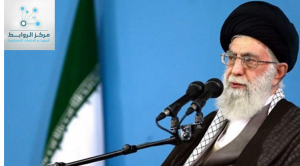The dismissal of Mohammad Hassan Akhtari, secretary general of the World Ahl al-Bayt Society, by Iran’s supreme leader, Ali Khamenei, raises many questions about Khamenei’s aim, as well as its timing, which makes the whole situation ambiguous. He is considered the “black box” for all the secrets related to the establishment of Lebanese “Hezbollah”, relations with the Syrian regime, and the interdependence between these three parties and the geography they cover.
Akhtari served as Iran’s ambassador to Syria for 14 years in two serious periods: the first began in the mid-eighties and lasted for nearly 11 years, and the second was his return as ambassador to Tehran in 2005, the first phase witnessed the work in Lebanon to split the Shiite Amal movement and the establishment of Hezbollah and build a deep netork for the future of Iranian control over Syria , while the second phase coincided with the assassination of former Lebanese Prime Minister Rafik Hariri, and witnessed the completion of the building of military capacity of Hezbollah, and it seems that these regressive repercussions of the assassination, and the way of Akhtari act in the expression of huge influence of Iran in Syria, found a peak line that ended with his departure from Damascus and the appointment of a new ambassador in early 2008.
The dismissal of Akhtari also raised a state of surprise , questions about the reasons that prompted Khamenei to take such a decision, especially as Akhtari is described in Iranian circles as “the field father” and “the storehouse of the secrets of the Islamic Republic’s relations with Hezbollah,” and that the media of the Revolutionary Guards , the Quds Force and state television highly value him, and it uses phrases such as ” Damat Barakat ” and “Damat Izzah” ( long-standing pride) after mentioning his name, which explains how influential and important he is for the Iranian regime.
The timing of the dismissal of such an important person reveals a relationship with what is currently happening in two cross-border geographies, one related to the area of operation of Akhtari , the Syria-Lebanon area, and the second to the area of operation of the most famous Iranian leader, General Qasem Soleimani, who oversees all of Iran’s military and security operations from “the Shiite Crescent ” to Yemen, without forgetting, of course, the biggest battle Iran is waging against the United States.
An important and useful element in the analysis of the incident is that the alternative person in the location of Akhtari is Reza Ramadan, who served for 12 years as president of the Hamburg-based European Islamic Federation of Shiite Scholars, a choice that can be explained by the fact that the Iranian strategy is currently focused to deal with America and Europe, which makes the movement of Lebanese Hezbollah and the rest of the militias affiliated with Iran and distributed on the Arab map, subject to that great battle, and not vice versa, and that as long as the danger to Iran, what is required is to focus efforts to prevent this danger and not indulging in the the domestic affairs of any militia so as to reduce the value of any Iranian official «specialized» exclusively to those affairs and attaches it too much importance.
The line of “interests of Iran first” coincides with the line of “interests of America first” , and as Iran needs experts such as Reza Ramadan more than Mohammed Hassan Akhtari, we found that the shares of John Bolton, an adviser to US President Donald Trump pro-war with Iran, fell in favor of Michael Dandira, a senior CIA official who is considered to be one of those responsible for the assassination of Imad Mughniyeh, Hezbollah’s military official in 2008 (the year of Akhtari’s departure from the Tehran embassy in Damascus), and Dandira, according to US media, favored dialogue with Iran in particular with General Qasim Soleimani.
Unit of Iranian Studies
Rawabet Center for Research and Strategic Studies

